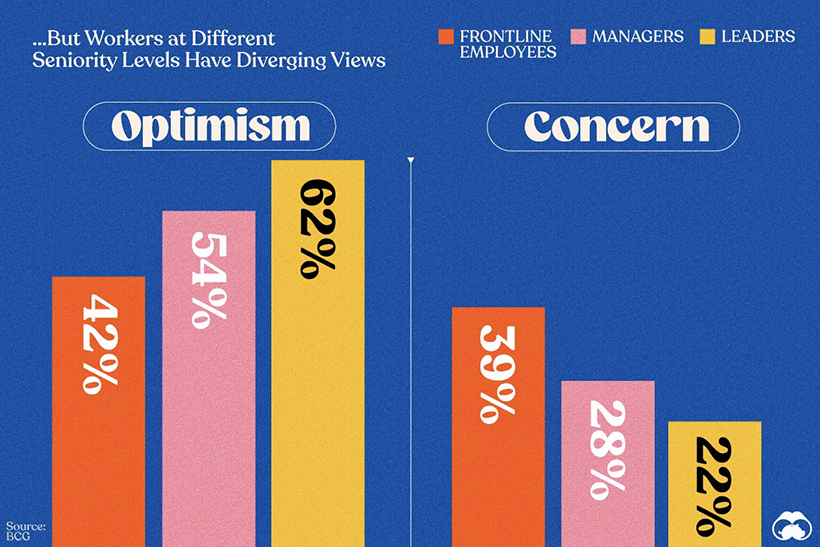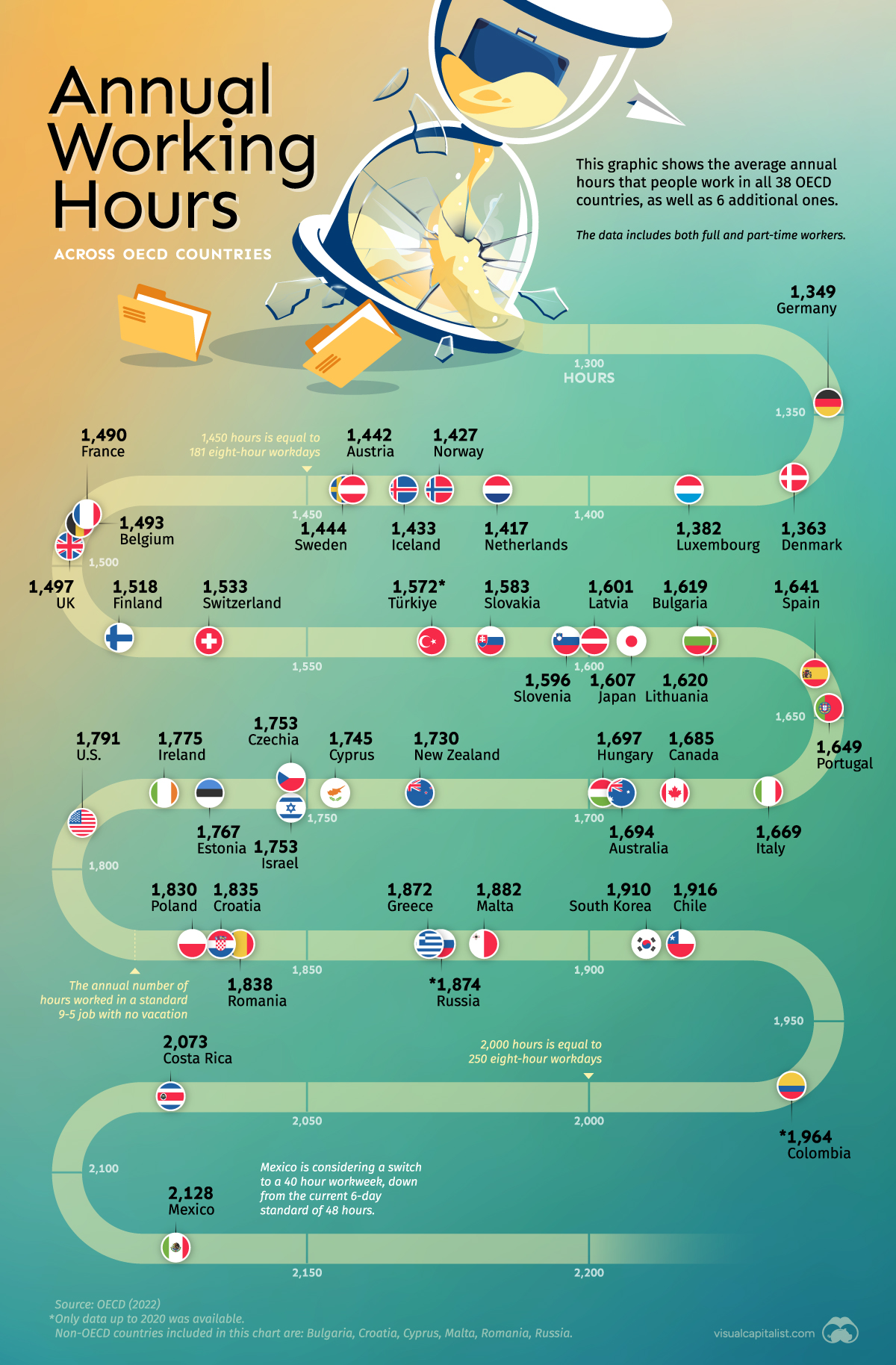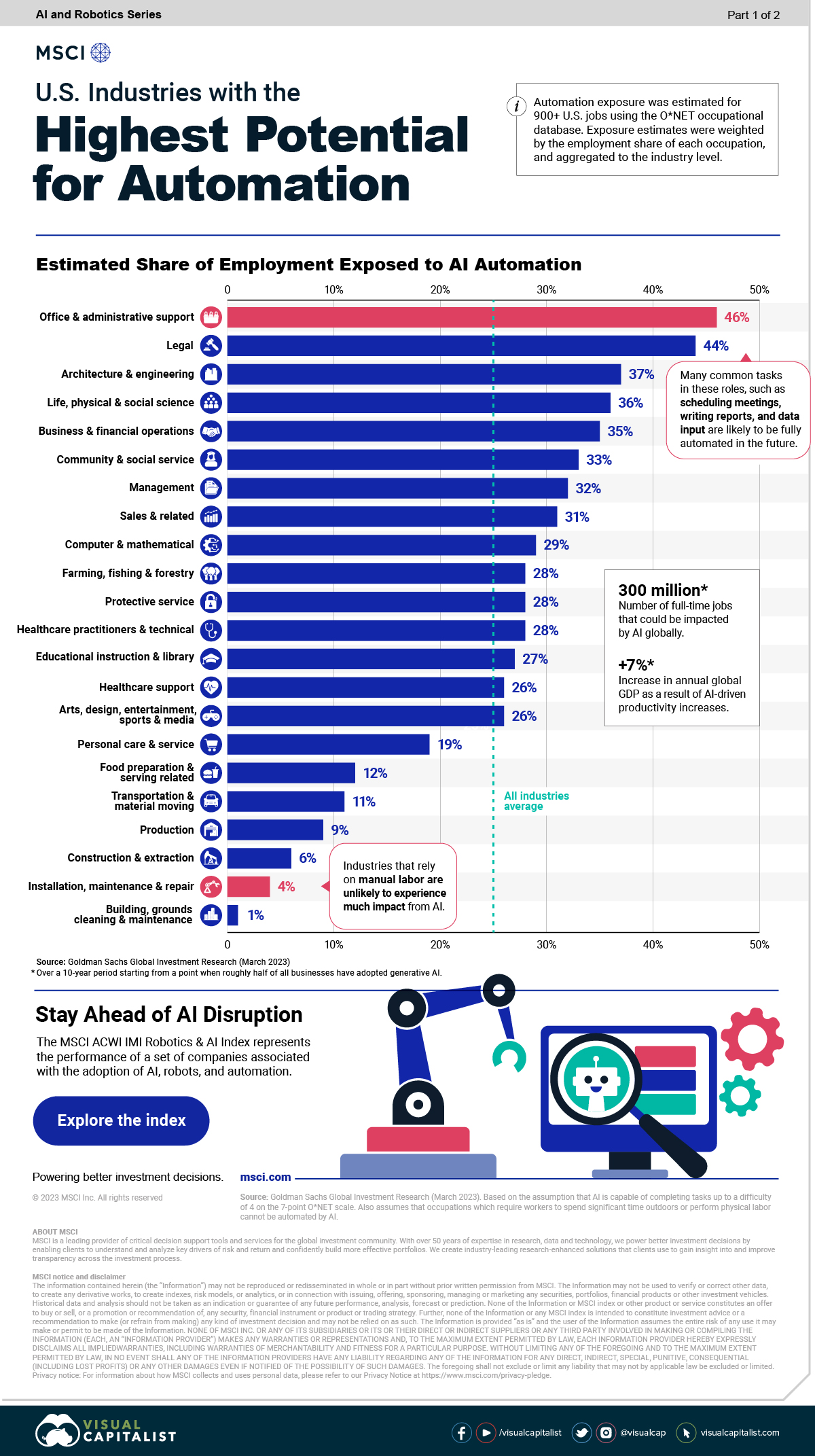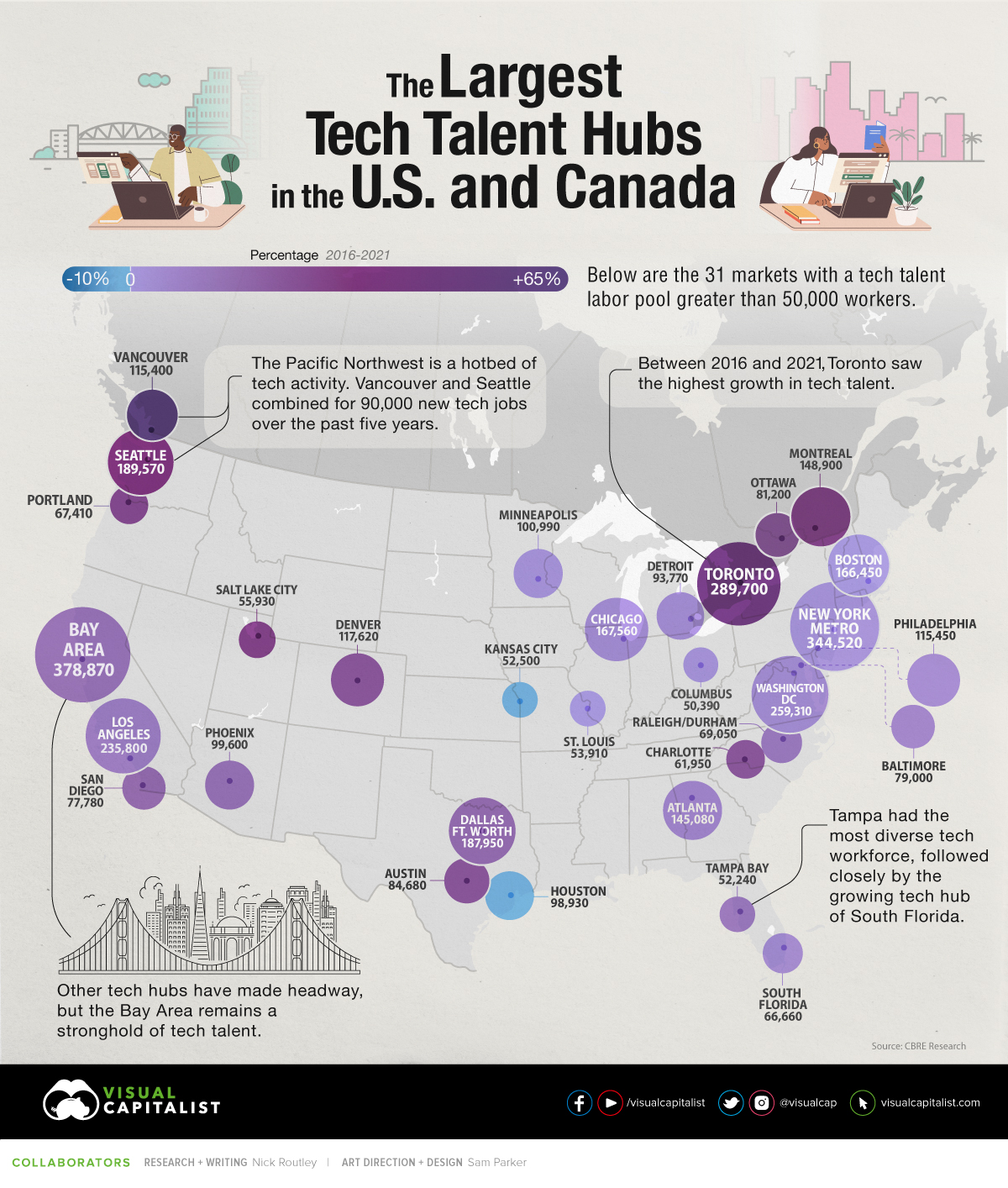


 Inviting you to meet the
Inviting you to meet the
Global Business
Talent Masterminds
The future of office life is not female — or so new data suggests
By Melissa Cantor, Editor at LinkedIn News
Survey results published Thursday by the Bureau of Labor Statistics show men are returning to in-person work at a faster clip than women, with just 28% working partially or fully from home in 2022.
That’s a sizable drop from 2021, when some 35% of men worked from home at least some of the time.
In contrast, the share of women working remotely barely changed between 2021 and 2022, falling from 41.5% to 41%.
Because women tend to carry out more housework and childcare duties, analysts expect the disparity to persist — and potentially worsen the gender pay gap.
- Education is a factor. Only one in five high school graduates worked virtually in 2021, compared to two-thirds of college-educated workers. “Women more often have higher degrees, which allow for jobs that are more likely to be remote,” writes The Washington Post.
- So are housework and childcare. In households with children under age 6, women spent 1.1 hours and men spent 31 minutes per day providing physical care to kids. Forty-seven percent of women and 22% of men say they do daily housework.
Global Business
Talent Masterminds
 Philip Berry
Philip Berry
Fort Lauderdale, Florida
Too many people approach career development as the job of the corporation and they don’t take joint responsibility for managing their career in a manner that is strategic.
Take Charge:
5 Personal Brand Strategies to enhance your career growth, ongoing development
Stephen McGarry SCRP
New York
I am an experienced Global Mobility executive that believes a Mobility program should continue to grow and change as the environment and conditions continually change.
A policy and program should continue to transform and grow as the company itself grows and changes.
This is one of my passions.
The better the program, the better for the Company and the better employee experience.
To me, the job is different every day.
Each employee I deal with is different than the ones before them, and have their own set of personal circumstances that need to be adhered to.
Every person I deal with, whether they be a transferee, or a Corporate HR client, makes the job different on a daily basis.
I also revel to make sure my company’s employees are properly cared for during one of the most stressful times in a person life, moving, whether it be between offices, states or countries, with little to no impact on their family’s personal lives and the employee’s professional life.
Moving people is the basis of the job and making them happy is what we need to do.
Global Mobility | Talent Mobility | Immigration Compliance | Tax Compliance | Remote Work Compliance | Total Rewards | Innovator
Annette Dernick
Cologne Bonn Region
Peace creates value
Sergey Gorbatov
Madrid
To own your career, perform at your peak, and stand out as a leader you need an edge
We’ll help you discover, develop, and apply yours.
SMALL CHANGES CAN LEAD TO BIG DIFFERENCES. WHEN YOU FIND AN EDGE.
Do you develop and leverage it?
Are you aware of what you need and what you have?
Chicago / NYC

Ute Haug
Berlin
International communications
Speaker, Mentor, Relationship Builder
#lebensfreude #joiedevivre
Patience is not one of my strengths. Patience with myself even less. But it can be learnt. It takes time though; it’s a journey. A journey that eventually leads to the destination, quite possibly with obstacles and detours – but getting there at the end, with patience
Annalieza Landa
https://www.linkedin.com/in/annalieza
Kingston upon Hull, England
Mark Colo
St. George, Utah
Mark will leave you with five adaptive principles that will help you abolish FAD (fear… apathy…doubt) in your life. ![Peace With Parkinson's: It's Called A Resting Tremor, Not An Earthquake. by [Mark Colo, Rachel Colo, Barbara McNichol]](https://m.media-amazon.com/images/I/51CIie6kAmL.jpg)
#Parkinson #Parkinson‘s #Neuroscience #TEDx #TEDTalk #TEDxStGeorge #Health #acceptance


Is generative AI the catalyst for the next industrial revolution? Or is it a flash in the pan? Is the entire workforce destined to become AI makers and managers?
It’s possible that one, all, or none of these options could be correct. But despite how fast large language models (LLMs) and tools have grown the popularity of artificial intelligence, one thing that is clear is that there are no quick or easy answers.
Amidst all this uncertainty, opinions on how we use AI in the workplace have evolved. Recent survey data from Boston Consulting Group (BCG) reveals how the labor force feels about AI in the workplace today, compared to how they felt five years ago.
The consultancy surveyed 13,000 people (C-suite leaders, managers, and frontline employees) in 18 different countries for the results, and divided their top two responses into five categories: Curiosity, Optimism, Concern, Confidence, and Indifference.
More Optimism, Less Caution Around AI
General curiosity about AI remains almost unchanged (at 60%) since 2018.
Meanwhile, despite how rapidly AI has advanced in the last five years, or perhaps because of it, more than 50% of workers surveyed are optimistic about AI’s impact on work, a 17 percentage point (p.p.) increase from 2018.
And though 30% remain concerned about AI, this fell 10 p.p. over the same time period.
| Sentiment towards AI | 2018 | 2023 |
|---|---|---|
| Curiosity | 60% | 61% |
| Optimism | 35% | 52% |
| Concern | 40% | 30% |
| Confidence | 17% | 26% |
| Indifference | 21% | 14% |
Clearly, respondents perceive AI in the workplace far more positively now than they did in 2018. But that’s not all. The respondents’ confidence in how AI can influence their work has also increased (+5 p.p.) and indifference towards it has shrunk significantly (-7 p.p.).
Given the explosive growth in generative AI since the end of 2022—ChatGPT gets 1.8 billion visitors a month—it’s not surprising that workers are far more aware of AI compared to just five years ago.
Optimistic Leaders, Cautious Employees
As with any survey data, the devil is in the details. BCG notes that the sentiments between rungs on the company ladder differ sharply around AI.

While two-thirds of polled leaders are optimistic about AI in 2023, less than half of polled frontline employees shared the same sentiment. Frontline employees were also the biggest group that responded with concern (nearly 40%).
Importantly, frontline employees are almost as optimistic as they are concerned about AI in the workplace.
| Position | Optimism | Concern |
|---|---|---|
| Leaders | 62% | 22% |
| Managers | 54% | 28% |
| Frontline Employees | 42% | 39% |
Managers were closer to leaders in their AI optimism, though some experts believe their jobs might actually be the most at risk of being replaced all together.
More Use, More Optimism Around AI
With ChatGPT reaching 100 million active users just two months after launching, it’s clear that more and more people are experimenting with generative AI.
In BCG’s poll, regular AI users—categorized as people who use it at least once a week for work—are nearly three times more optimistic than concerned about AI’s impact on their work in 2023.
| AI Use Level | Optimism | Concern |
|---|---|---|
| Regular | 62% | 22% |
| Rare | 55% | 27% |
| None | 36% | 42% |
Even rare users are two times more optimistic than cautious, with the non-user category registering the most concern.
Which brings us to who these regular users are.

A staggering 80% of the leaders polled say they’re already regular users of AI, compared to 46% managers and 20% frontline employees.
While eyebrow-raising, these figures are not surprising.
People in leadership positions tend to have a mandate to stay ahead of the curve on current business trends, and along with their less strictly defined roles, have more freedom to try, use, and adopt AI tools while they formulate policies for their workplace.
| Position | Regular User | Rare User | Nonuser |
|---|---|---|---|
| Leaders | 80% | 12% | 8% |
| Managers | 46% | 23% | 31% |
| Frontline Employees | 20% | 20% | 60% |
At the same time, AI tools may not be green-lit en masse in many workplaces yet, preventing frontline employees from giving them a go.
So Is AI Coming For Jobs or Not?
Regardless of how definitively one can make a claim about artificial intelligence taking away people’s jobs, the survey respondents were unanimous that AI in the workplace will have some kind of an impact on their employment.

Slightly more than one-third felt that their job is in jeopardy as of 2023, while an overwhelming 86% polled said they needed training to adapt to how AI will transform their work.
With how fast the field is currently transforming, upskilling could be the safest path to follow as the AI revolution unfolds.

The U.S. labor market is having a strong start to 2023, adding 504,000 nonfarm payrolls in January, and 311,000 in February.
Both figures surpassed analyst expectations by a wide margin, and in January, the unemployment rate hit a 53-year low of 3.4%. With the recent release of February’s numbers, unemployment is now reported at a slightly higher 3.6%.
A low unemployment rate is a classic sign of a strong economy. However, as this visualization shows, unemployment often reaches a cyclical low point right before a recession materializes.
Reasons for the Trend
In an interview regarding the January jobs data, U.S. Treasury Secretary Janet Yellen made a bold statement:
You don’t have a recession when you have 500,000 jobs and the lowest unemployment rate in more than 50 years
While there’s nothing wrong with this assessment, the trend we’ve highlighted suggests that Yellen may need to backtrack in the near future. So why do recessions tend to begin after unemployment bottoms out?
The Economic Cycle
The economic cycle refers to the economy’s natural tendency to fluctuate between periods of growth and recession.
This can be thought of similarly to the four seasons in a year. An economy expands (spring), reaches a peak (summer), begins to contract (fall), then hits a trough (winter).
With this in mind, it’s reasonable to assume that a cyclical low in the unemployment rate (peak employment) is simply a sign that the economy has reached a high point.
Monetary Policy
During periods of low unemployment, employers may have a harder time finding workers. This forces them to offer higher wages, which can contribute to inflation.
For context, consider the labor shortage that emerged following the COVID-19 pandemic. We can see that U.S. wage growth (represented by a three-month moving average) has climbed substantially, and has held above 6% since March 2022.
The Federal Reserve, whose mandate is to ensure price stability, will take measures to prevent inflation from climbing too far. In practice, this involves raising interest rates, which makes borrowing more expensive and dampens economic activity. Companies are less likely to expand, reducing investment and cutting jobs. Consumers, on the other hand, reduce the amount of large purchases they make.
Because of these reactions, some believe that aggressive rate hikes by the Fed can either cause a recession, or make them worse. This is supported by recent research, which found that since 1950, central banks have been unable to slow inflation without a recession occurring shortly after.
Politicians Clash With Economists
The Fed has raised interest rates at an unprecedented pace since March 2022 to combat high inflation. More recently, Fed Chairman Jerome Powell warned that interest rates could be raised even higher than originally expected if inflation continues above target. Senator Elizabeth Warren expressed concern that this would cost Americans their jobs, and ultimately, cause a recession. According to the Fed’s own report, if you continue raising interest rates as you plan, unemployment will be 4.6% by the end of the year. – ELIZABETH WARREN
Powell remains committed to bringing down inflation, but with the recent failures of Silicon Valley Bank and Signature Bank, some analysts believe there could be a pause coming in interest rate hikes.



Twenty of the 25 cities with the best work-life balance fall in Europe. The diverse range of cultures and lifestyles in these cities offers its residents a balance between work and personal life.
The top city on this list, with a work-life balance score of 70.5/100, is Copenhagen, Denmark. The city’s high standard of living, low unemployment rate, 52-week-long parental leave, and focus on sustainability and green spaces all contribute to the city’s top score. It also helps that the Danish lifestyle focuses on taking time for self-care and relaxation.
Healthy lifestyles along with generous vacation and parental leave policies also placed the European cities of Helsinki, Stockholm, and Oslo in the top five in this list. In fact, the average employee work week in these cities falls below 30 hours. The proportion of remote jobs in Helsinki, Finland is over 50%.
Many companies in Europe prioritize employee well-being, which has led to the emergence of a wellness culture. This culture includes practices such as remote work and mental health support.
Balancing Work and Life in Oceania
Although Europe dominates the top 25 list, some cities in Oceania also boast of healthy work-life balance scores.
Ranked 5th on the list of cities with the best work-life balance, workers in Auckland, New Zealand, have a 26.3-hour work week on average and a year’s worth of parental leave.
Meanwhile, the cities of Brisbane (53.3), Melbourne (53.1), and Sydney (51.4) in Australia follow an average work week of 32.4 hours to 38 hours. The sunny weather in these cities also positively influences their scores.
For Some, Safety is Key
UAE’s capital city is the only Asian city to make it to this top 25 list, and this is despite its high property prices and relatively low number of vacation days available to workers. On the flip side, the city is safe, sunny, and boasts a high quality of life.




Learn about us… advertise your Brand and it’s culture…tell the world. Discuss with Ed (+1)619.787.3100
AUDIENCE VIEWS
8,415 May 22 – June 20 … +131% previous 30 days
23,177 January 1, 2023 – June 5, 2023
233,455 January 1, 2020 – June 5, 2023; launched GlobalTVtalkshow early 2020
562,914 January 1, 2015 – June 5, 2023; joined Google Analytics 1 January 2015
SOURCE
January 2020 thru 5 June 2023
1, US
2, LONDON/UK
3, SHANGHAI, BEIJING + HONG KONG
4, INDIA
5, CANADA
6, AMSTERDAM + ROTTERDAM
7, MANILA
8, PARIS
9, SINGAPORE
10, RIO + SAO PAULO
11, DUBAI / UAE
12, ITALY
13, AUSTRALIA
14, IRELAND
15, ISRAEL
16, JAPAN
17, AUSTRIA
18, SWITZERLAND
19, SOUTH KOREA
20, PAKISTAN
audience infosource: GoogleAnalytics
You belong on GlobalTVtalkshow















